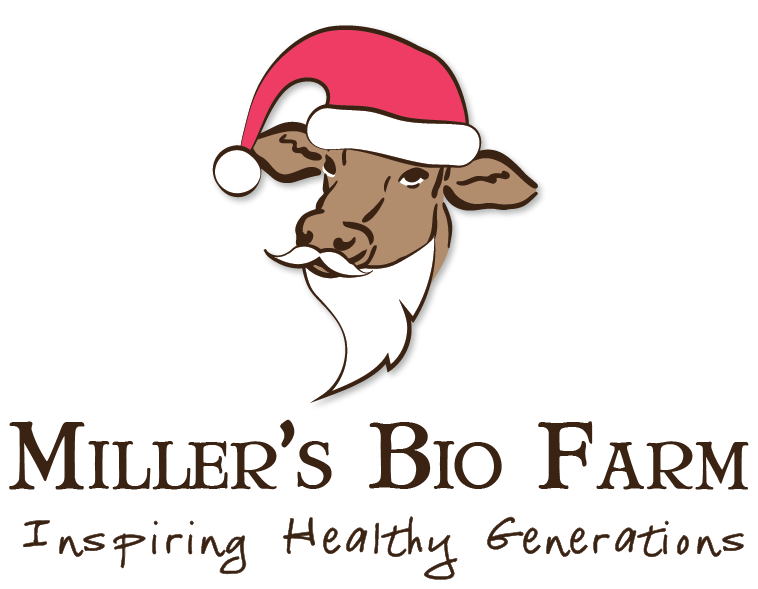What's up with the egg shortage? There are a few conspiracy theories.
posted on
February 3, 2023

As you most likely already know, there’s an egg shortage right now. But why is this happening? Well, this Twitter thread from a few days ago gives us some insight into the many conspiracy theories behind the issue.
One theory is that Bill Gates flooded Africa with vaccinated chickens a decade ago. In turn, that caused the avian flu pandemic last year.
To my knowledge, mRNA vaccines are being considered by the USDA, but I haven’t heard of any farms that are actually using them. It might be true that mRNA vaccines have been tested in animals. But, I have no evidence as to where this is happening, at what scale, and the results of these trials.
But, I guess my knowledge would, of course, be limited on this topic. None of our naturally minded farms routinely vaccinate. And, our farm (and the farms we work with) 100% say no to mRNA vaccines.
Another theory is avian flu. It’s true that flocks in the US were ravaged by this disease in 2022, and this likely affected egg supply dramatically. But let’s be clear - the issue was in big ag, not with small natural farmers like us.
With conventional egg farming (even cage-free or organic), chickens are kept indoors in mega structures housing 10,000 or 100,000 chickens. If a disease like avian flu gets into one of those buildings, it’s pretty awful. Just like any disease, indoor spread is a quick thing, but outdoor spread is rare. In most cases, the farmer must kill ALL of the chickens in that building. This is why big ag loves vaccines.
The sudden disappearance of so many laying hens can have a huge effect on egg supply. Chickens don’t start laying eggs until they are about 6 months old. It really takes about 10 months for them to be “good” layers, laying a normal size egg once a day. Switching to a new flock needs to be planned. It’s not something that a farmer can make happen overnight.
The sudden disappearance of millions of chickens would make grocery stores short. And what do consumers do in response? They start buying from small farms like us. But, in turn, this makes us short on eggs. After all, no farmer can magically create a new laying flock overnight!
Our farms thankfully didn’t have an issue with avian flu. Yes, they were wary of it and took precautions. But, when birds are raised naturally outdoors, with plenty of exercise and foraging and eating a high quality corn & soy free feed, there’s little worry about disease.
Another theory is that the problem is stemming from the chicken feed.
Big farms, small farms, and households have reported that their chickens mysteriously stopped laying eggs around fall of last year. From what I can see, everyone affected sourced their feed from huge commercial suppliers. When they switched to a different feed or fed kitchen scraps or let the birds forage, they started laying eggs again.
This first hand anecdotal evidence really makes me wonder - what was in that feed!? We may never know.
What I do know is that our chickens didn’t have this problem. Sure, chickens naturally lay less in the winter, since there’s less sun. But, there wasn’t a dramatic drop or halt in production.
It also makes me really thankful for our farming haven in Lancaster County. We have access to a large network of small farmers and suppliers, many who focus on more natural practices. We are lucky that our chicken feed is mixed locally and comes from as many local growers as possible.
There are other theories, too.
A manufactured food shortage, the agenda towards plant-based, a media campaign to create fear around disease and increase support of vaccines, gain-of-function research, vaccination through food, globalism... the list goes on and on. We may never know the "truth".
Although we may never know the exact cause(s) of the egg shortage, it's real and we need to deal with it. Here’s what we’re doing.
Eggs will be in and out of stock for probably the next couple months.
--> We are prioritizing our eggs for subscription customers.
This is how we’ve always advertised Subscribe & Save. Subscription customers get priority on our inventory. This hasn’t been a real perk until now. When eggs are available, you are welcome to sign up for a subscription :)
--> For new orders, we are limiting the number of chicken eggs you can purchase to 3 dozen per customer.
The purpose is to prevent panic buying. If you already have a larger amount of chicken eggs on your subscription, we will fulfill it.
--> We are collecting eggs from other local farmers and selling “Community Eggs”.
They’re not necessarily “egg farmers” in a wholesale kind of way, but they are local homesteads and farms that have laying hens. We can guarantee that the eggs are all GMO-free. But, besides that, they all live different lifestyles and are fed different feeds.
--> We have plenty of Corn & Soy Free DUCK EGGS. And by plenty I mean A LOT! This is your chance to give duck eggs a try!!
Yes, duck eggs are about 20% more expensive than our chicken eggs. But, keep in mind that duck eggs are about 50% larger. So, it’s actually a deal!
Duck eggs are delicious, very similar in taste to a chicken egg. And, they’re packed with more nutrition and some say they’re better for baking. You can learn more about the difference between duck eggs and chicken eggs here.
What’s your theory on the egg shortage? What do you think about our solutions?
I’d love to hear from you. Comment below (no account required - start typing for the guest option to appear) or contact us.




